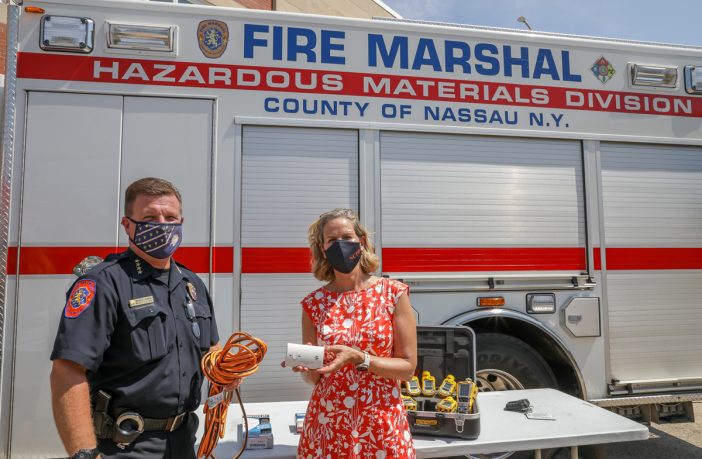In the aftermath of Tropical Storm Isaias and in anticipation of an extremely active hurricane season, Nassau County Executive Laura Curran today was joined by the Nassau County Fire Marshal’s Office to highlight and demonstrate safe generator installation and use. A growing number of local residents are purchasing generators for their homes to prepare for potential storm-related outages. However, recent incidents have demonstrated that generators can pose a serious threat if installed or used improperly.
“As we continue to address Isaias aftermath and hold PSEG accountable, let’s keep an eye on what could be a record-setting storm season. Many residents are installing or using portable generators during storm season, and we want to make sure everyone is staying safe. Portable generators can be a lifesaver during power outages, but when used or installed improperly they can be extremely dangerous. Just this past Saturday, a South Farmingdale homeowner lost their home after filling a hot generator with gasoline from a gas can that caused the vapor to be ignited from the hot generator exhaust, and caused significant damage to the house,” said Nassau County Executive Laura Curran.
County Executive Curran and the Nassau County Fire Marshal’s Office offer the following safety guidelines for residents installing or using a portable generator.
- Never use a generator indoors or in enclosed spaces. This includes garages, crawl spaces, and basements. Opening windows will not help.
- Carbon monoxide is a colorless and odorless gas. Carbon monoxide poisoning caused by inadequate ventilation has been an all too common tragedy following natural disasters and blackouts. Recognize signs and symptoms of CO poisoning, which includes dizziness, headaches, nausea, and tiredness. If you or someone else should experience these symptoms, get them to fresh air immediately and seek medical attention.
- Only fill generators with fuel when the generator is turned off and cool. Fueling a hot generator can cause vapors to ignite. Before refueling, shut down the generator and allow it to cool. Fuel cans should be stored and transported in approved vented containers marked with their contents. Filling gas cans must be done on the ground and not inside of a vehicle or the bed of a truck, with the vehicle turned off.
- Generators should have at least 3 feet of clearance on all sides and above to ensure adequate ventilation. Watch out for the exhaust of your generator that the fumes do not come back into your home or the home of a neighbor and are kept away from fresh air intakes.
- If you are powering your home, make sure that a licensed electrician installs the equipment. Your electrical service main should be set to the off position. Do not create a condition where you feed power back into the grid and potentially seriously injure the same electrical utility workers trying to help you.
- Keep generators out of the rain and avoid creating static electricity around them, especially when fueling the tank. All generators should be grounded. Connect to a grounding rod, then to the generator frame itself, with a grounding cable or suitable copper wire.













